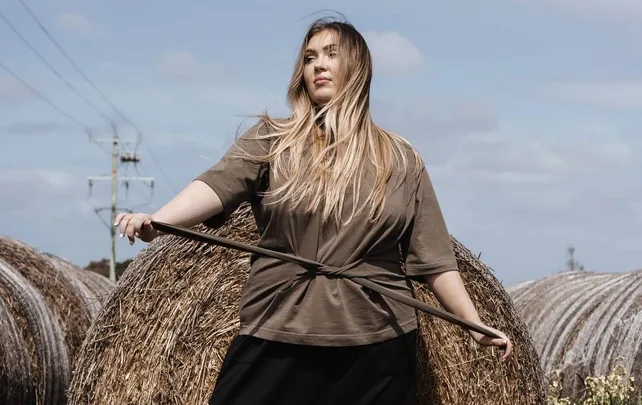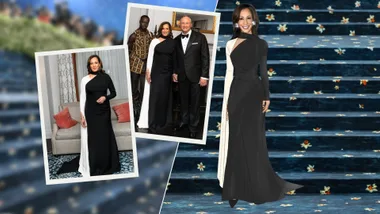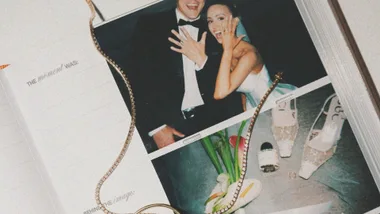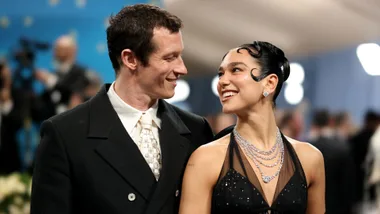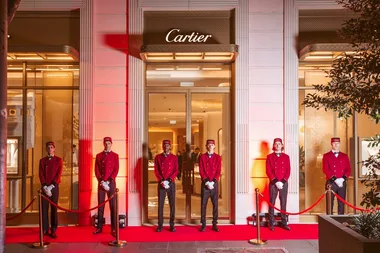It’s nothing ground-breaking to proclaim that the fashion industry is inherently fatphobic. What might be surprising is seeing that sustainable fashion falls victim to the same stranglehold. The same brands that pride themselves on caring for their garment workers and using environmentally-friendly fabrics are often the same brands that often don’t cater to over a size 12.
The cost myth
But surely, there are a lot of reasons for this, right? A common misconception is the hefty cost of catering to more sizes. Danielle Abery-Miller, founder of Melbourne label Sanct, tells me that this isn’t really the case. With a Bachelor of Fashion Design Honours and experience as a production coordinator at multiple Australian brands under her belt, Danielle has access to a faction of fashion that’s hidden from most consumers.
“It doesn’t cost more to produce larger sizes, it costs more to produce a wider range of sizes,” she clarifies. “Say you wanted to produce four sizes. It costs the same amount and it’s up to you whether you produce those sizes from 6-12 or sizes 30-36.”
“The whole ‘it costs more in material’ [argument] is so negligible. And if that was such a factor, then why don’t [brands] charge more for a size 10 than [they] do for [a] size 6?”
Darwin-born model, activist and creative director Mahalia Handley agrees.
“Why would you lose money on a chopping board when the Australian fashion plus size industry is a [$1.1 billion] untapped industry?” she asks. “There are no clothes being produced for us, yet plus size women represent 68% of the shopping market.”
Chelsea Bonner, CEO and founder of Bella Management, echoes the same sentiment.
“It’s not just good for people’s mental and physical health to see themselves represented, but it also makes financial sense for the company. I think brands get afraid of trying something different in case they lose their core customer group. But when you’re talking about a core customer that makes up maybe 20% of all women, then that doesn’t make any logical business sense to me at all,” she tells me.
Overt and covert fatphobia
Despite its obvious financial benefits, fashions brands are actively choosing to ignore this large sector of women. Unfortunately, this mentality is simply fatphobic. Diet culture and fat-shaming run rampant in our lives, and fashion only amplifies these insidious mindsets.
“I’ve definitely worked in environments that have huge anti-fat bias,” Danielle says, referring to a brand that produced sizes 6 to 12. “Whenever we’d get a size 12 returned and it was broken, my manager would say, ‘oh, it’s probably because they were a fatty.’”
“Even if they could double their profits, they won’t extend their sizing because they don’t want to see their products on anyone larger than a size 12.”
Traditional fashion gatekeepers are falling behind and are embarrassingly missing the mark on what consumers want.
“A lot of brands are still stuck in the idea that every woman wants to be thin,” agrees Chelsea. “They still think that the outdated idea that everyone wants to look the same is still relevant.”
Size inclusivity isn’t straight-forward
The term ‘size inclusivity’, like sustainability, is hard to define. What may be deemed inclusive for one person, isn’t for another. Danielle now tries staying away from this term, and simply states that she offers sizes 8 to 22.
She tells me that size inclusivity isn’t as simple as scaling a size 6 design to a size 16; design lines and shapes will change with size. Even people who fit the same size have such varied bodies, so rigid garments can’t accommodate everybody. It’s why we need plus-size people working behind-the-scenes in every stage of fashion.
“It’s really hard for me to find sustainable fashion that works,” shares Mahalia. “The only long-term products I do buy are accessories.”
For sustainable brands with small production runs, custom and made-to-order pieces are a way to ensure size inclusivity.
What can you do?
Whether you have size privilege and are straight-sized or otherwise, we can all use our voice to create change.
“The more people speak up, speak out and get on a brand’s social media and ask the question, ‘where am I represented?’ the more likely they are to pay attention,” recommends Chelsea.
“Make sure when [you] see diversity of any kind, that [you] cheer as loudly as possible for it… It’s a measurable statistic that clients can look at and say, ‘that really works and we need to do more of that.’”
While Danielle encourages customers to shop and support brands who are already pioneering size diversity, she has also seen the success of customers pushing for an increased size range.
“The future is going to be sustainable fashion,” confirms Mahalia. “So when [sustainable brands fail to] include a whole audience right now, they’re not including them for the long term run. Plus size people are ready and able and wanting to spend their money. You can either get on board or fade into irrelevance.”
And while there’s so much pressure for people to partake in sustainable fashion, it’s just not a reality when it excludes so many.
“Whenever there’s intersections of access, you’ve got to be really kind and understanding of people,” Danielle says. “You shouldn’t feel ashamed for clothing your body in literally the crumbs of ways that society gives you. Not everybody can shop ethically… and there’s absolute no shame in it.”
Maggie Zhou is a freelance writer and co-host of podcast The Culture Club. You can find her on Instagram here.
